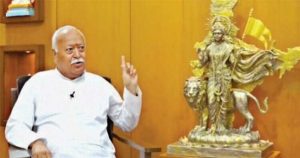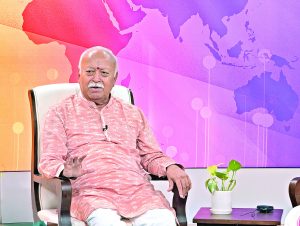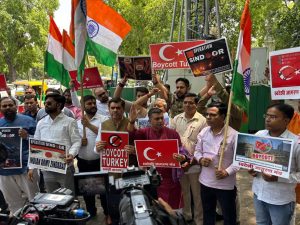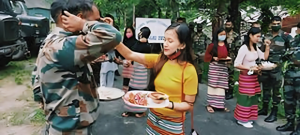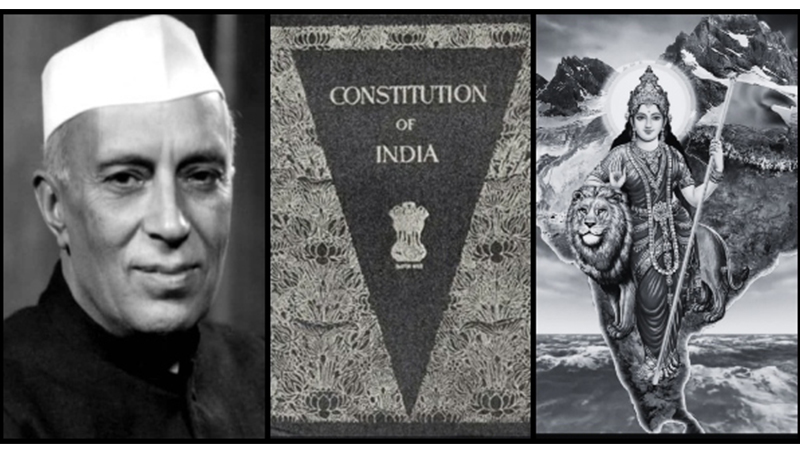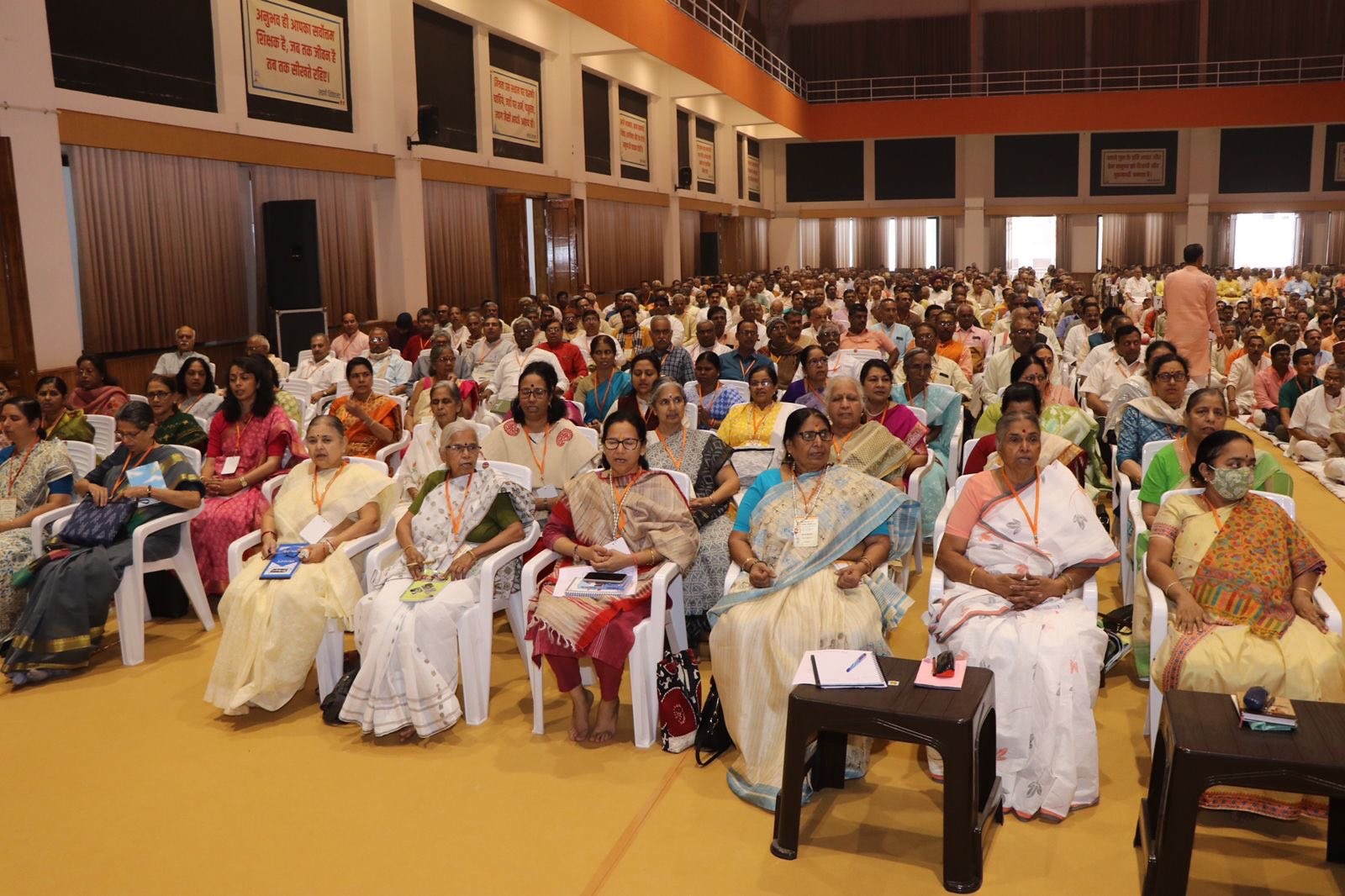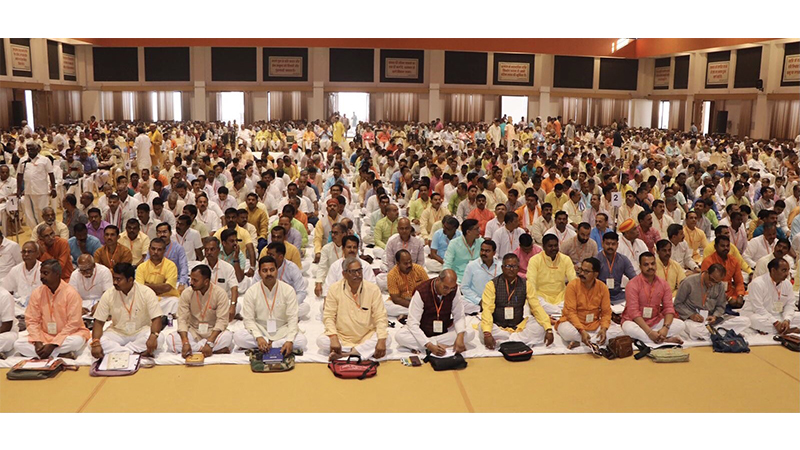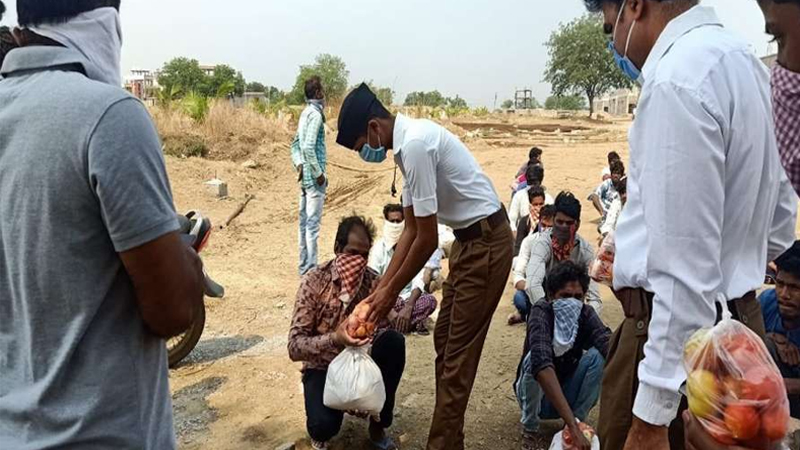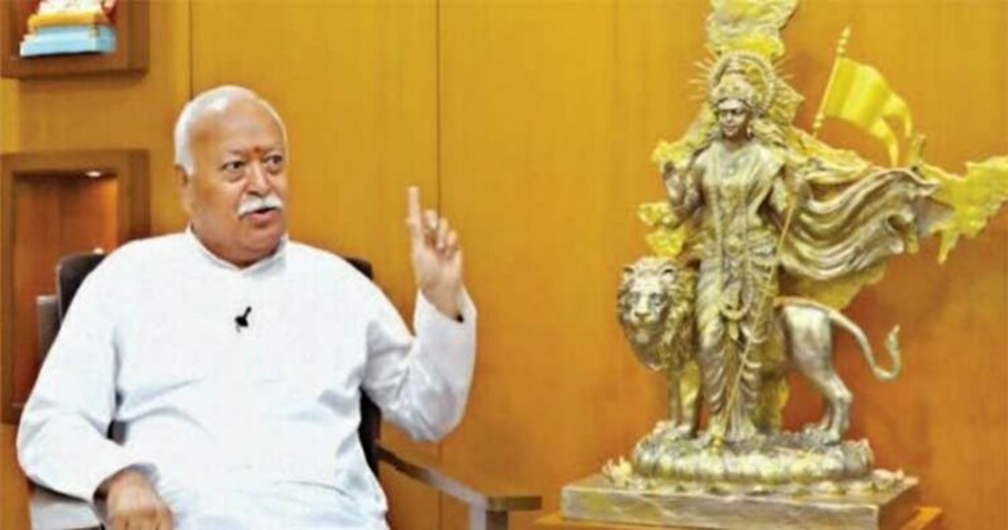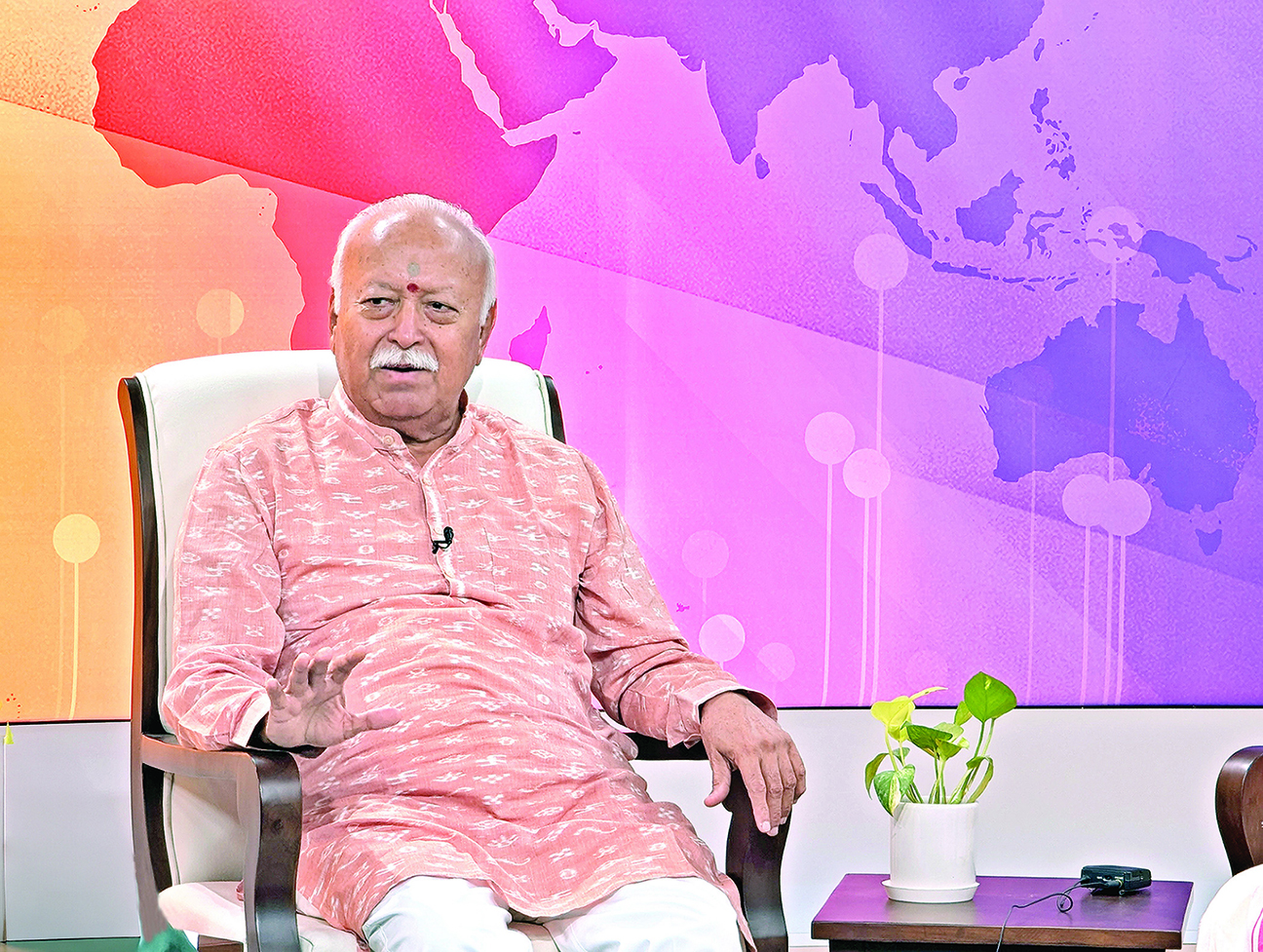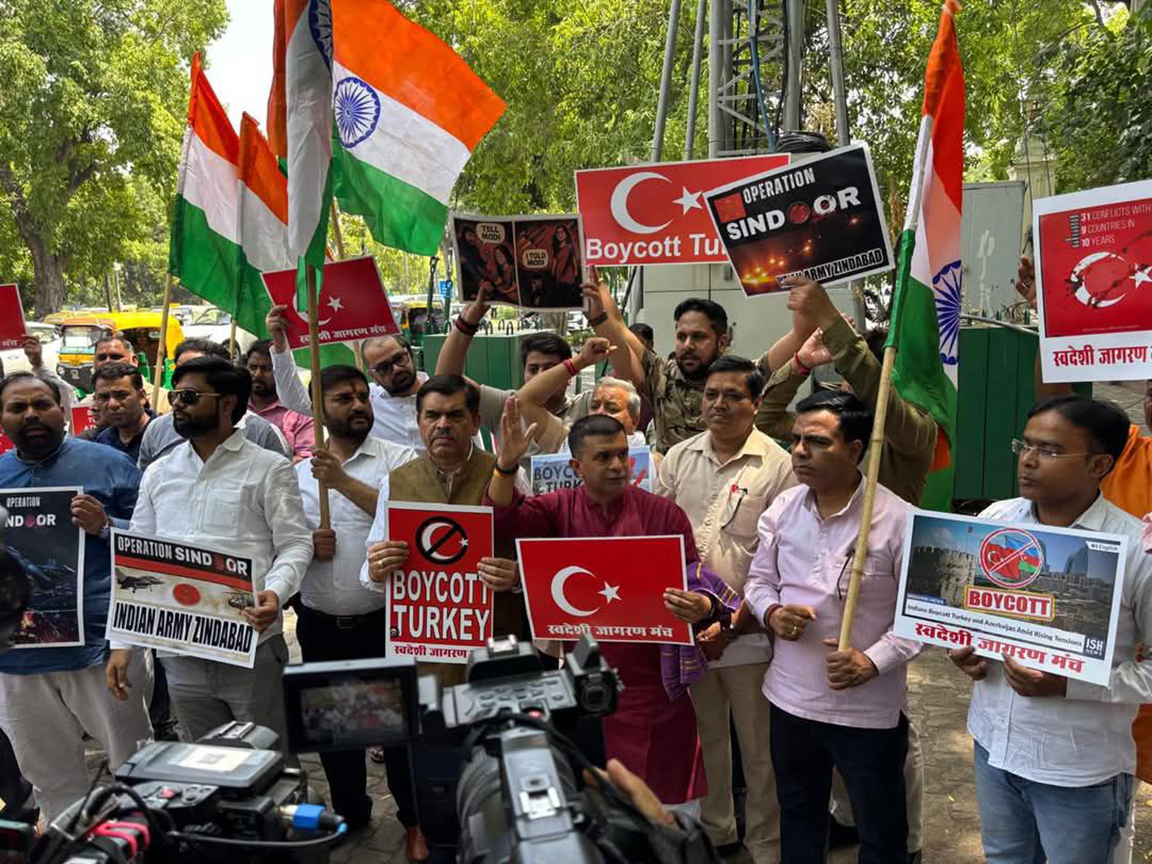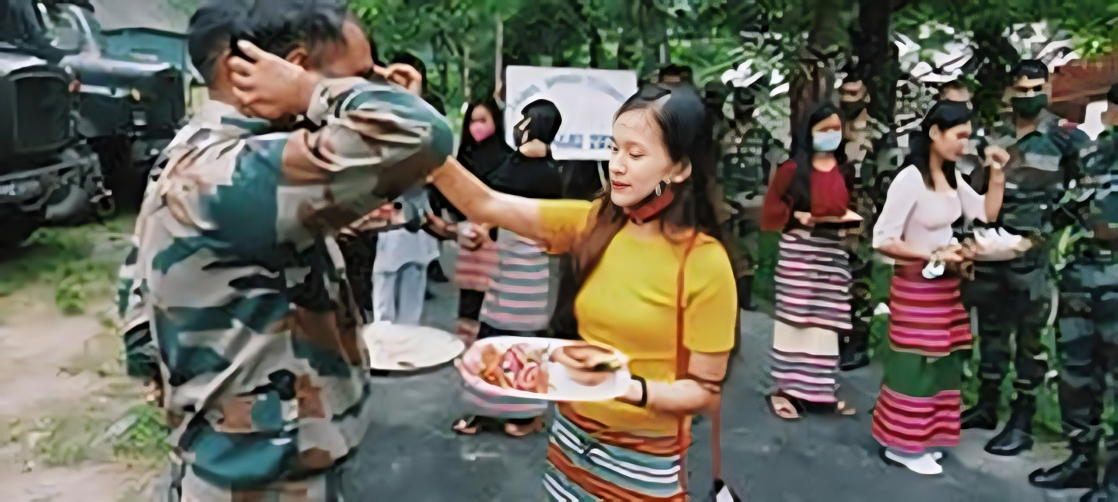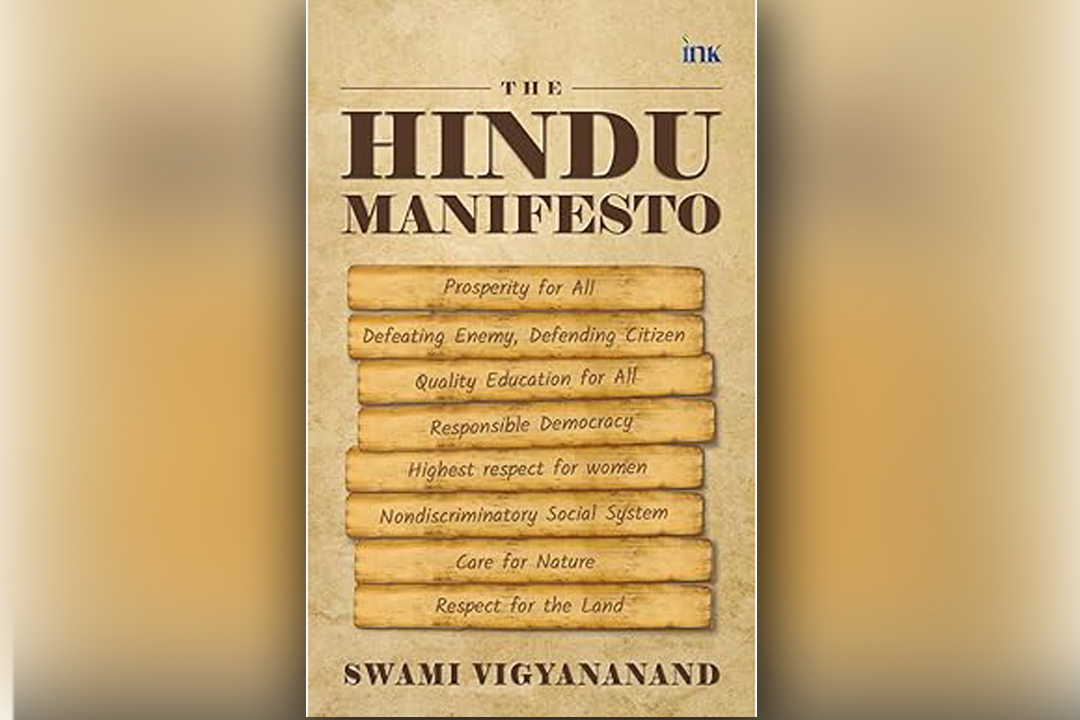Guruji: The Second RSS Chief – A brief Biography
Updated: February 4, 2023 5:59
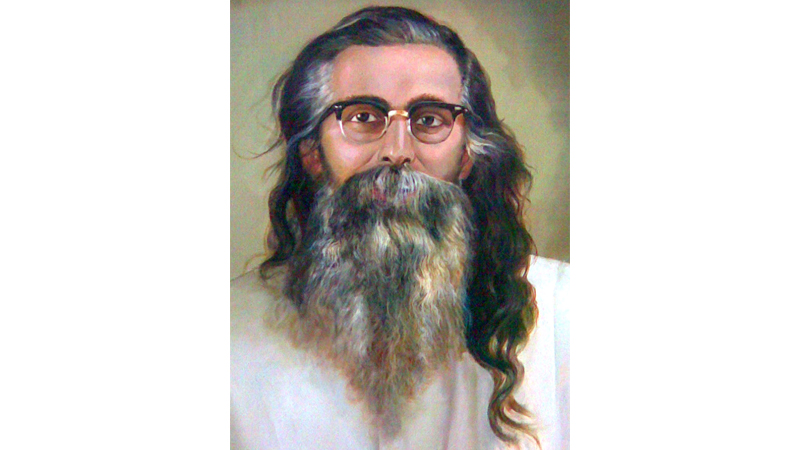
Madhav Sadashivrao Golwalkar was the second Sarsanghchalak of the RSS. He is commonly known in Sangh parleys as Guruji. This name was initially used by his students in Banaras Hindu University where he used to teach.
His father’s name was Sadashivrao who was a teacher and his mother was Lakshmibai. They lived in Nagpur. In his childhood, he was also called ‘Madhu’ lovingly. Nagpur was a province of modern Madhya Pradesh when Golwalkar was born there. Although his mother tongue was Marathi but as his father was posted frequently in Hindi-speaking areas, so Madhu had good command over Hindi. He was equally good in English too.
H.V. Seshadri recalled in a biographical sketch, “Madhav was a sharp boy with prodigious memory. Once his school teacher Prof. Gardener was teaching the Bible. Madhav interrupted saying, “Sir, the reference given by you is not correct. Actually it should have been like this….” And saying thus. He uttered another sentence. All the students and Prof. Gardener were amazed. But when it was cross-checked with the Bible, he was found to be correct. At the end of the class, the Professor gave him a fond pat on the back. This incident served as a witness to his qualities like exceptional memory, courage and unshakable self-confidence. His memory served him till his last day. Even today, throughout the country, people recall anecdotes of his phenomenal memory.”
Madhav completed his intermediate studies in 1924 and went to Banaras Hindu University to do B.Sc. Seshadri recounts another interesting anecdote that provides glimpse to Guruji’s some lesser known extraordinary aspects during his younger days, “The huge repository of invaluable books in the library there was as if waiting to quench his thirst for knowledge. Madhav started reading the books, through and through, one by one. One day his toe was bitten by a scorpion, but he very casually cut that portion of his foot, dipped that foot in potassium permanganate solution and resumed his study. Amazed at this, one of his friends asked, “How do you manage to study despite such severe pain?” Madhav replied, “Well, the scorpion has bitten my foot, not my mind!” Later on also, people have many a times witnessed his tranquil tolerance under most excruciating physical pains.”
He returned to Nagpur after completing his Masters in Zoology with first class and a few months later, opted to go for research in Chennai. In 1929, as his father retired from the service, it resulted in financial stress on the family. Madhav had to leave his research work and return to Nagpur.
Madhav began teaching at Banaras Hindu University (BHU) from August 1931. He was a popular teacher among students. He was known for providing financial assistance and textbooks for needy students. More than often he ended up spending a significant part of his salary to help students. Pandit Madan Mohan Malaviya, Founder of BHU, was fond of him.
Golwalkar came in contact with the RSS through a Swayamsevak from Nagpur, Bhaiyyaji Dani, who was sent there as a student by Dr. Hedgewar. He became the Palak (Guardian) of that Shakha. After finishing his term at BHU, Guruji returned to Nagpur and completed his study of law.
In Nagpur, Dr. Hedgewar was constantly in touch with Golwalkar and motivated him to get increasingly involved with the RSS. In 1934, he was appointed as Sarvadhikari (officer-in-charge) of Sangh Shiksha Varga (Officer’s Training Camp) in Akola.
By now, his parents had started thinking about his marriage. Seshadri recounts, “Shri Guruji’s mother put forth the proposal for his marriage and said if he decided against marrying, their Golwalkar family lineage would cease to exist – he being the only surviving son. Shri Guruji replied, “In the present situation, it is necessary that, for the welfare of the society, if the family lineages of not only me but several others like me are terminated, I am not in the least worried.” The debate over his marriage ended then and there.”
Meanwhile, Golwalkar came in contact with Sri Ramakrishna Ashram’s Swami Bhaskareshvarananda in Nagpur. There he became close to Sri Amitabh Maharaj and told him that Swami Akhandananda, a direct disciple of revered Sri Ramakrishna Paramahansa, was staying at the Sargachi Ashram in the then Bengal.
He quietly left for Sargachi in search of a spiritual guide in 1936. In Sargachi, he immersed himself in the service of Swami Akhandananda, who was quite old and indisposed. After six months, Swamiji decided to initiate him into the Order. The experience was overwhelming as he himself described, “I have received the blessings one gets after innumerable births. My body felt thrilled all over and I am finding myself an altogether changed person.”
In February 1937, the revered Swamiji passed away after which Golwalkar spent some time in Ramakrishna Ashram, Belur Math. Then along with Amitabh Maharaj, he returned to Nagpur.
In Nagpur, Golwalkar found his right calling and immersed himself in organisational work of the RSS from 1938 under the mentorship of Dr. Hedgewar. Golwalkar explained it later, “Like spirituality, organization of the Nation has towards it my inclination from early days. I believe that I would be in a better position to achieve it successfully being a part of the Sangh. Hence, I have dedicated myself to the activities of the Sangh. In the light of the insight and practical approach of Swami Vivekananda, I think my decision is appropriate.”
In 1940, after the death of Dr. Hedgewar, he became the Sarsanghchalak. For the next 30 years, he covered the country twice travelling to almost every nook and corner of the country relentlessly to expand the footprints of the RSS. Most of the frontal organisations of the RSS came into existence during his tenure as the RSS Chief.
According to Seshadri, “It was but natural that this superhuman effort and hard work of Shri Guruji would finally take its toll on his health. By the time Shri Guruji turned 60, his health started deteriorating. In May 1970, a lump was noticed in his chest. It was diagnosed to be cancerous. Even then he decided to get it treated only after his already scheduled tour of May and June was completed.”
Dr. Praful Desai, who operated upon him at Tata Cancer Hospital, was not an RSS worker. But he wrote, “I was wondering how Shri Guruji would be able to take such an intense and long surgery at 65. But the calmness, courage and cooperation with which he went through the whole procedure, with the smile never leaving his face, it was amazing. He started walking around the very next day.” He lost no time in getting back to his gruelling schedule and started travelling extensively again.
Meanwhile, by the end of 1971, he started feeling seriously unwell. Seshadri recalls an intimate discussion and an interesting incident in the history of the RSS at this juncture when the issue of changing the name of organisation was discussed. “He (Golwalkar) felt, his end was nearing. He decided to have his last discussions with the prominent Swayamsevaks as per the Hindu tradition. Accordingly, in the Tatvajnana Vidyapeeth at Thane in Maharashtra, run by honourable (now late) Pandurang Shastri Athawale ji, the programme was organized. Shri Guruji was present during the Abhyas Varg (study camp) of the prominent workers deployed in various activities aimed at nurturing the true national spirit. There were suggestions that if the Sangh adopted the word Bharatiya instead of Hindu, it would absolve it of the charge that it was communal. Shri Guruji presented the Hindu thought in its positive aspect and removed all the doubts on this issue with reasoning based on historic perspective and his personal experience. Along with this, he also discussed in depth other ideologies and did a comparative study of other belief systems and elaborately explained how the Hindu philosophy alone is capable of ensuring the highest standard of welfare for the humanity and yield permanent happiness.”
On March 25, 1973, he addressed members of the Akhil Bharatiya Pratinidhi Sabha at Nagpur attended by the most important functionaries of the RSS from all over the country. He had to struggle hard to speak but he still managed to speak for 40 minutes. He said, “The single aim of all our different endeavours should be to make our nation stand high commanding worldwide respect for our country.”
“Whatever be the atmosphere, tread on your path with this faith that the word ‘Hindu’ will be recognized all over one day.” He concluded his speech saying, Vijay Hi Vijay Hai (ever victorious). This was his last public address. His health deteriorated further
The way Golwalkar pushed his limits for the organisational cause almost became a legend and is still recalled on every possible occasion in the RSS by millions of Swayamsevaks. Seshadri has given an authentic account of his last few days. “In Nagpur, in May (1973), the Third Year Shiksha Varga of the Sangh was going on. It was impossible for Shri Guruji to make it to the Varga. Hence, in keeping with his strong urge, it was arranged that Swayamsevaks province-wise were called into the Sangh Karyalaya to meet him. There he got acquainted with them and emotionally appealed to them to carry on the Sangh work whole-heartedly and steadfast. The programme lasted from 16th May to 25th May. Later even that could not be carried on. The Swayamsevaks from various parts of the country and other eminent personalities from all walks of life kept pouring into the Sangh Karyalaya to enquire about his health. On the 3rd of June, when the Sanchalika of Rashtra Sevika Samiti, respected Mausi Kelkar called upon him, he meaningfully said, “I am fully ready.” On the evening of 4th June, when the workers attending upon him came with a bottle of oil to give him massage, but it was empty. He jokingly said, “It’s over now! Good. Tomorrow, who will be there for massage?” On 5th June in the morning, he took his bath and meditated sitting on his usual seat. Later at 9.30 in the night, he breathed his last and his soul got liberated from the shackles of the mortal body.”
On the morning of June 6, three sealed letters, written by Golwalkar, were opened and read. The first letter was read by the Sanghchalak of Maharashtra province Babasaheb Bhide, which mentioned that Balasaheb Deoras was to be given the charge of Sarsanghchalak after Golwalkar. The other two letters were read by Balasaheb Deoras.
In the second letter, he had indicated that it was not desirable that a memorial be erected for anyone other than that of the founder of the Sangh, Dr. Hedgewar.
The third letter by Golwalkar read: “If I have ever knowingly or unknowingly caused hurt to anyone, to all of them I tender my apologies with folded hands.”
A composition of Saint Tukaram was also mentioned in this letter:
“O Saints! Please forward my last request
To the God that He might not forget me.
He knows everything; what may I say more.
Tukaram says his head placed on His feet
I may always remain under the shadow of His grace.”
His body was laid by the side of the memorial of Dr. Hedgewar in Reshambag, (Nagpur) on a pyre made of sandalwood. Later, the Saffron Flag of the RSS was hoisted and thousands of Swayamsevaks and others who gathered there recited the RSS prayer in grief-struck tone.
Seshadri comments appropriately, “Now Reshambag is home to two great personalities in their Chaitanya form. Dr. Hedgewar sitting in the form of his image is on the upper floor of Smriti-Mandir and Shri Guruji, like the sage Dadhichi (who sacrificed his body for the welfare of Gods and mankind), as a Smriti Chinha (a symbolic memory).” The statue of Dr. Hedgewar seems to be saying, “My selection was just right. Shri Guruji has spread the glory of the Sangh worldwide.”
Tributes by the Nation
Acharya Vinoba Bhave said, “Shri Guruji was not in the least narrow-minded. He was always driven by the lofty ideals of national interests. He considered other religions like Christianity and Islam with due respect and always hoped that in Bharat nobody would be isolated.” Jagadguru Shankaracharya of Puri said, “He was a saint, in white robes.” Jain Acharya Sushil Kumar Muniji said, “Shri Guruji was a giant of a man of our heritage.”
Jain Sage Acharya Tulasi said, “He was endowed with the qualities of both a connoisseur and a thinker.”
The then Prime Minister, Indira Gandhi said in the Parliament, “We have lost in Guru Golwalkar a famous personality, who was not a Member of the Parliament. He held a respected position in the nation by the force of his personality and the intensity of his convictions.”
Even ideological opponents extolled the virtues of Golwalkar. Samar Guha, a Socialist leader, said, “He inspired the qualities of patriotism, dedication and service in thousands of youths of the country.” Another Socialist leader S.M. Joshi said, “Shri Guruji was a sage.”
Lok Nayak Jai Prakash Narayan paid him a tribute by saying, “Shri Guruji was a spiritually great personality, who awakened thousands of youth to true nationalism.” Seshadri’s conclusion about Golwalkar’s work sums up the feelings of Swayamsevaks of the RSS about their second Sarsanghchalak, “As a harbinger of a new nationhood, Shri Guruji infused a unique intrinsic power into the national life through his unmatched personality and actions.”
(Source – Anand Arun, Know About RSS, Prabhat Prakashan, Second Edition)
